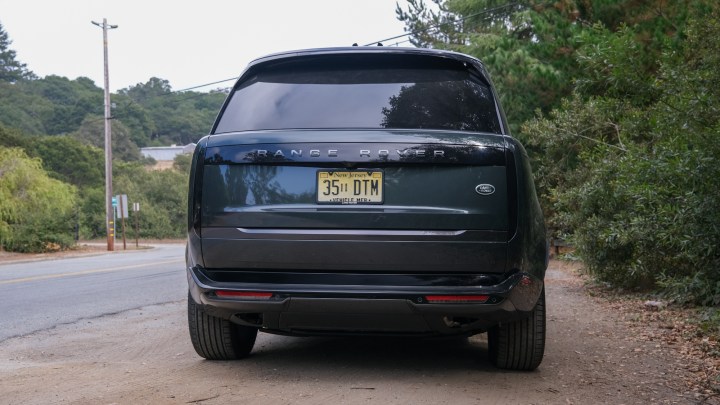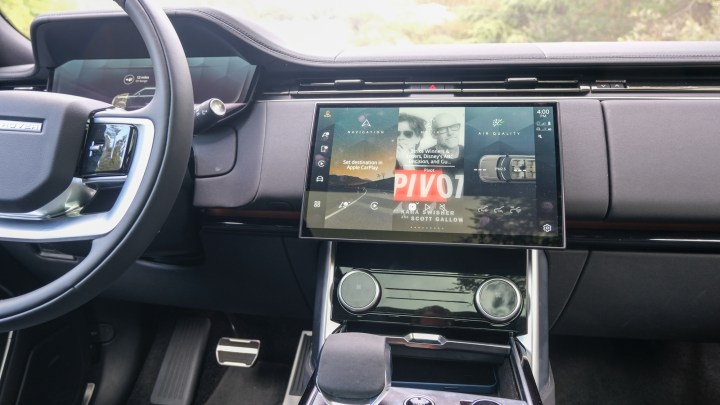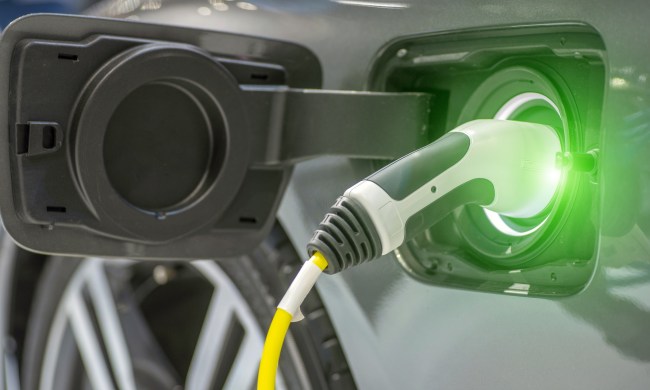The world of EVs is changing — and quick. Finally, the legacy automakers are releasing high-end, compelling electric car options that are joining the ranks of the already-great EVs from new companies. But after driving a particular plug-in hybrid (technically an EV, but not all-electric), there’s one particular electric car that I’m suddenly very excited for.
There’s a Range Rover-sized hole in the EV industry.
To be clear, Land Rover has announced an electric Range Rover, set to be available for preorder in “late 2023” and released to the public in 2024. There are some details about it out in the wild, but overall, we know very little so far. Even then, I feel like there’s far too little buzz about the car — considering the fact that when it does finally launch, it could be the best, most luxurious electric SUV to date.
Here’s what makes me so excited about the electric Range Rover.
If it ain’t broke, don’t fix it
This week, I’ve been driving the 2023 Range Rover SE plug-in hybrid, and what I love about it starts from the exterior. The car offers an all-new design for 2023 — and it’s stunning. With smooth, slightly curved lines along its side, and flush door handles that extend quickly and seamlessly when you go to enter the car, it impresses from the first moment you look at it.

The front of the car is the only thing that I’m not totally fine with. The headlights look great, and there’s a large grille for cooling between them — something that Range Rover will have to decide what to do with when the EV is launched. After all, it may need cooling of some kind, but far from the same level of cooling as a gas-powered car. There’s actually a second space for air intake toward the bottom of the front of the car, making for a slightly busy look.
I don’t mind the front though — and as mentioned, I find the rest of the car’s design to be stunning, including the rear, which has that long Range Rover logo extended across the back and a split trunk that makes it easier to load larger objects into the car. I will note that I definitely prefer the look of the rear in the Belgravia Green color more than I would if the car was white, and that’s because the gray highlights blend in a little better. Perhaps you’ll prefer the contrast, though.

Overall, I hope the handsome looks of the exterior of the car don’t change too much when Range Rover does launch an electric version. I would be surprised if that did happen, given the fact that this new look is so new — but car companies have been taking electrification as an opportunity to completely change the appearance of their cars. Much of the time, that’s been a good thing, and it has breathed new life into long-lasting models. But the current-generation Range Rover still has plenty of life left in its design.
Ultra luxury
Of course, the real luxury of the plug-in hybrid Range Rover mostly becomes apparent when you step inside of it. It’s spacious, comfortable, and modern. And once you’re inside, it becomes ever more clear that the Range Rover is built for luxury — and built to hit a certain, very high, price point. In fact, it may well offer one of my favorite car interiors, period.
Seats are comfortable and highly adjustable, including the passenger seats in the second row. There are clearly premium materials throughout, as well as plenty of storage at the back for those who need it.

Even better is how modern it is. In fact, before driving it, you’d be forgiven for thinking it’s actually an EV, despite the obvious fact that high-end screens certainly aren’t unique to electric cars. The main infotainment display, for starters, is stunning. It’s super bright and colorful, to be sure, but even better is the fact that it’s slightly curved and just kind of fits perfectly where it is. Boiled down, it is just a big tablet at the front of the car — but it doesn’t look like it was just added there for the sake of it. There are plenty of carmakers that are still figuring out how to include big screens in their car, but this car doesn’t suffer from that issue. The same is true of the instrument display, which again, looks great.
I wouldn’t mind if Land Rover made no changes to the interior of the car for the electric model. It looks and feels great, and should continue to do so for years to come.
Serious competition
Ultimately, unfortunately, the real need for more electric SUVs comes in the low end. There are at least a few high-end electric SUVs, and some of them could pose a serious challenge to Land Rover for the title of the best luxury electric SUV.

Perhaps the most obvious of this competition comes from the likes of Rivian and Mercedes-Benz. These two companies take a very different approach to electric SUVs. Rivian is a new company, built specifically to manufacturer electric cars. As such, its cars offer a good range, fast charging speed, and innovative, modern features. Mercedes-Benz’s electric SUVs are a little smaller, and less boxy, meaning that there’s a little less interior space. They are, however, also very luxurious.
So what does Range Rover have to do to offer a truly great luxury electric SUV? Well, it already has the luxury part down. All it has to do there is … more of the same. But the electric part may be a little challenging. We’re hoping that it can deliver at least 300 miles of range and a charging speed of at least 250 kilowatts. We’ll have to wait and see if it can deliver, in the end — but at the price that the electric Range Rover is likely to sell for, we’re certainly hoping so.



